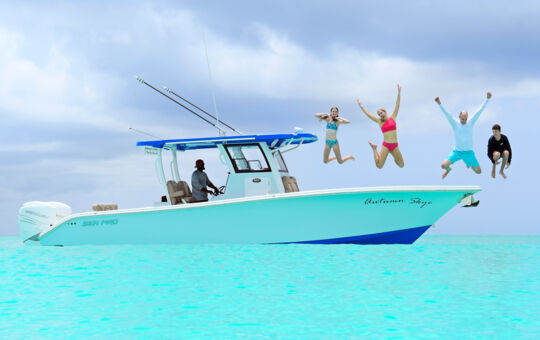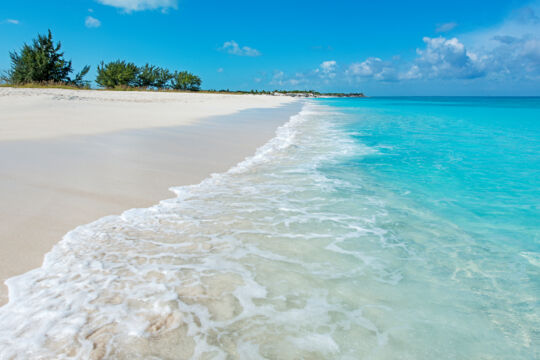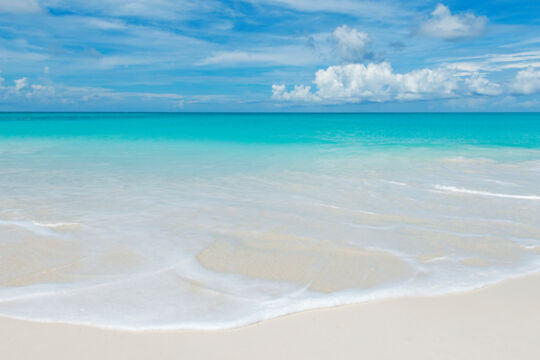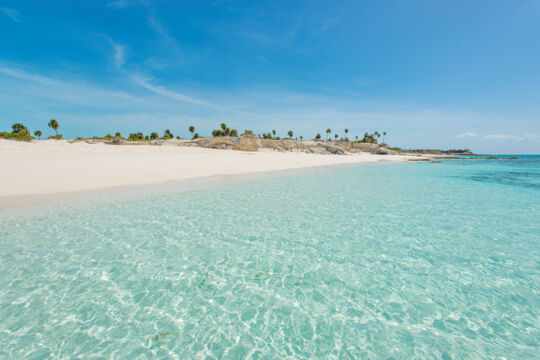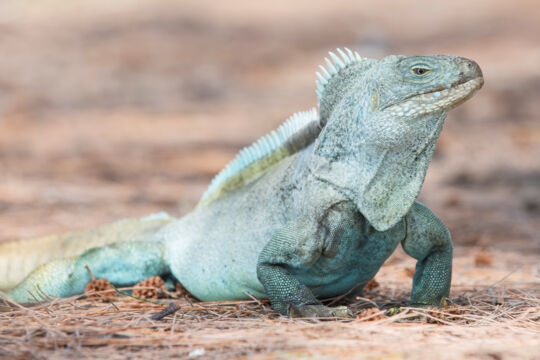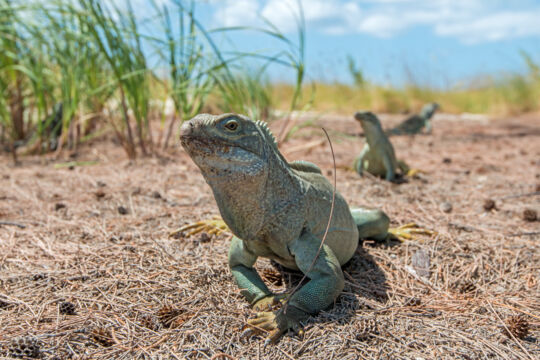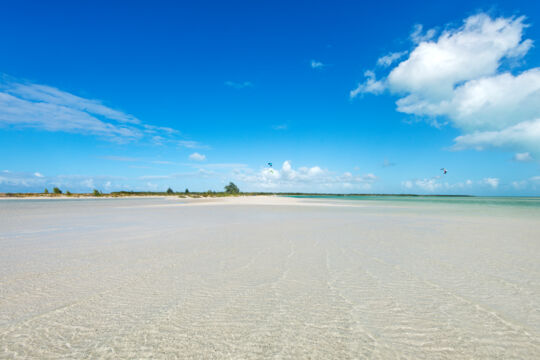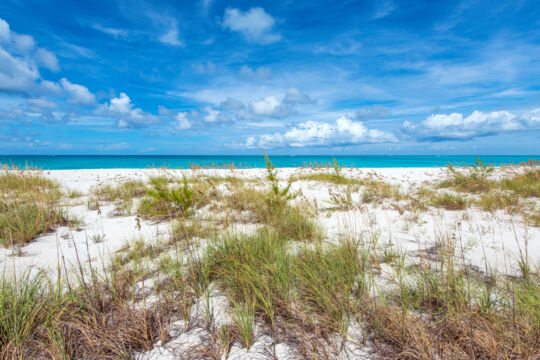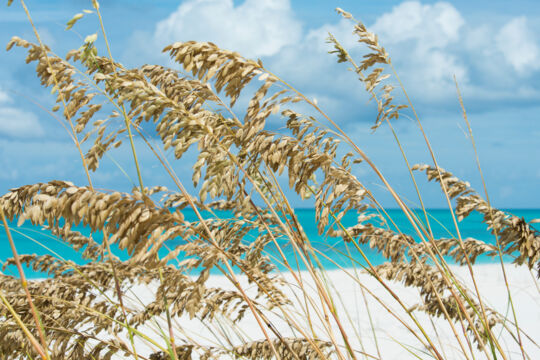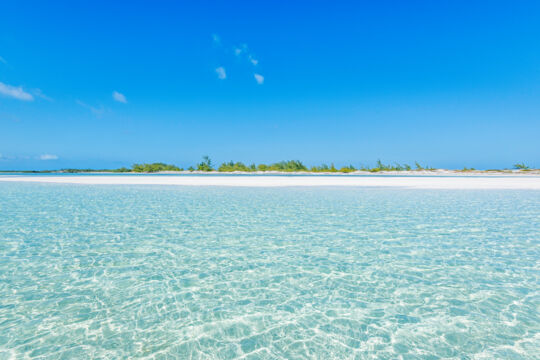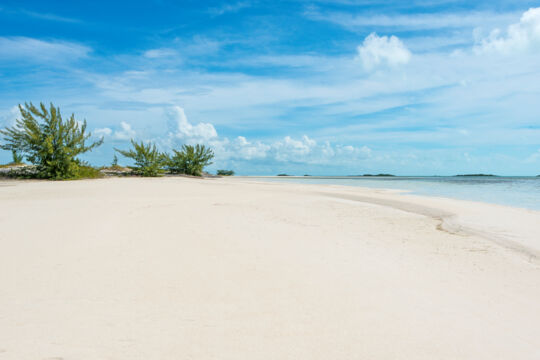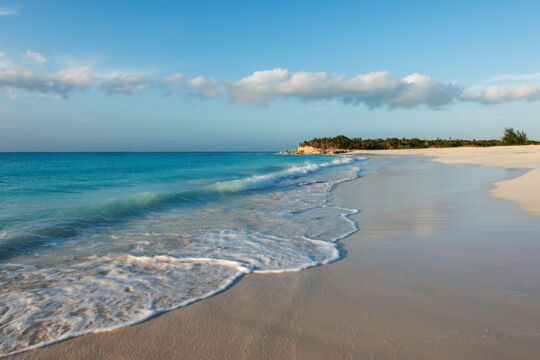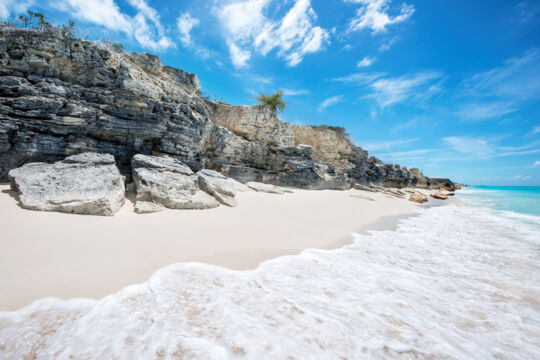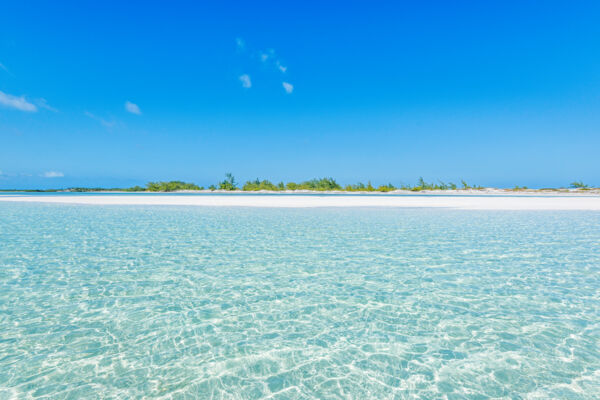Half Moon Bay Turks and Caicos
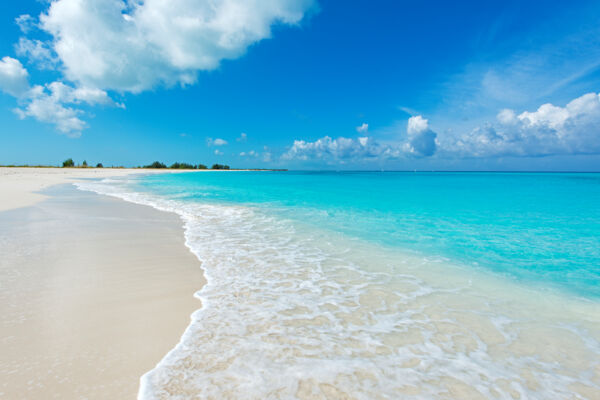
Half Moon Bay is a pristine 0.75-mile (1.2 km) beach found between the uninhabited islands of Little Water Cay and Water Cay. Essentially a sandbar that grew over time, this beach is about 400 feet (110 m) wide. Today, the central dune supports light vegetation and a handful of casuarina trees.
Half Moon Bay is one of the most popular destinations in the country for boat cruises, day trips, and picnics, and as a destination to kayak to from Providenciales. The coastal area is also one of the many gems in the Princess Alexandra National Park.
The northern side of this bay features a great beach with turquoise water. The southern side offers a sheltered and shallow lagoon with crystal-clear water and soft sand.
Water Cay and Little Water Cay
The likewise spectacular and adjacent Water Cay and Little Water Cay also offer some great attractions.
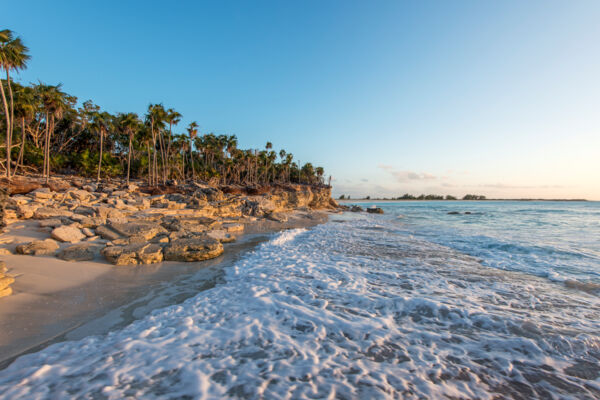
Little Water Cay is best known for its resident population of endemic and endangered Turks and Caicos Rock Iguanas, and these friendly creatures also make their way onto the dunes of Half Moon Bay as well. Boardwalks and viewing platforms lead through the dense tropical dry forest on Little Water Cay and are managed by the Turks and Caicos National Trust.
Water Cay is also an incredibly scenic place. A perfect white sand beach, framed by low semi-lithified limestone cliffs, stretches all the way to Pine Cay to the east.
The islands in the area support a globally rare plant—the thatch palm (Coccothrinax inaguensis). This beautiful little palm is common in the Turks and Caicos and very few islands in the southern Bahamas, yet is found nowhere else.
Turks and Caicos Rock Iguanas
The inquisitive and fascinating Turks and Caicos Rock Iguana (Cyclura carinata) is found on some of the uninhabited islands in the archipelago, and Little Water Cay and Half Moon Bay are the best places in the country to see these animals up close.
The iguanas thrive in the coastal bushland and dune environment of the region, and make their hollowed-out burrows in the ground and in the soft limestone outcroppings. Please stay on the established paths, as it’s easy to inadvertently step on and collapse the burrows of these endangered animals. Please do not feed the iguanas.
Several other types of interesting wildlife may be seen in the area as well. Herons, ospreys, egrets, and pelicans make for great birdwatching, and tiny juvenile lemon sharks can often be spotted in the shallow lagoon as well.
How to Visit Half Moon Bay
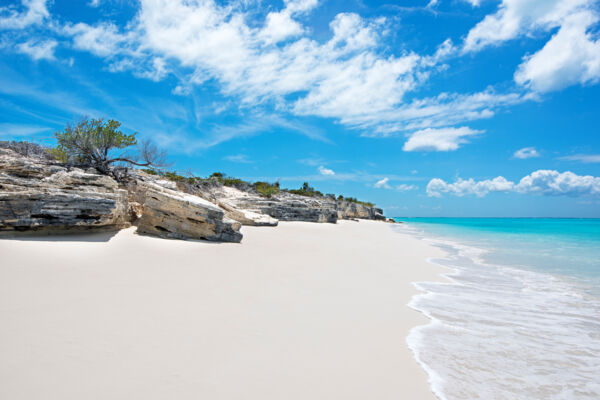
At only about one mile (1.7 km) from Providenciales, there are several ways to access Half Moon Bay and the adjacent cays.
Boat Excursions
The most popular way to visit Half Moon Bay is on a local boat cruise. There’s a tremendous variety of tours and charters to choose from, which stop at beaches and snorkeling reefs near Providenciales.
The typical tour spends an hour or two in the area, and often takes the opportunity to host a beach BBQ or prepare the local classic of conch salad.
Kayaking and Paddleboarding
Kayaking or paddleboarding from the Leeward area of Providenciales is another option. If paddling over, be aware that due to the typical east-southeast winds, the return trip may be a bit more work.
Kiteboarding
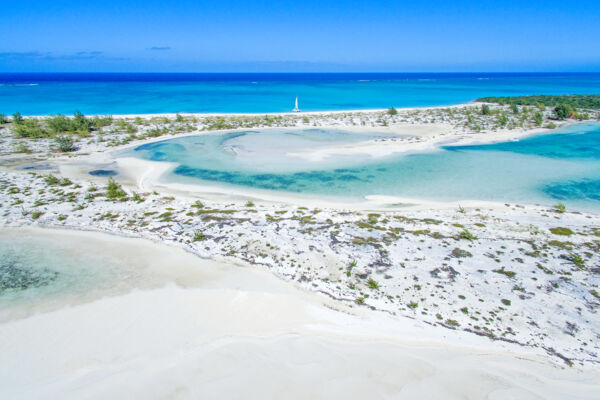
The lagoon on the south side of Half Moon Bay is a very popular spot for kiteboarding when conditions are right.
Due to a low, sheltering dune peninsula, the interior lagoon offers great flat water conditions even when the wind is high.
It’s possible to kite to Half Moon Bay (typically from the Leeward Going Through Point area) or take an organized kiteboarding safari offered by one of the local kite schools.
The Channel and Lagoon
From about 1960 into the 1990s, a channel actually existed where Half Moon Bay is now, between Little Water Cay and Water Cay. Created by Hurricane Donna, this feature gradually filled in over time, and all water movement stopped by 1999. Half Moon Bay Lagoon on the south side of the beach is largely formed from what used to be the channel.
Tour Companies






